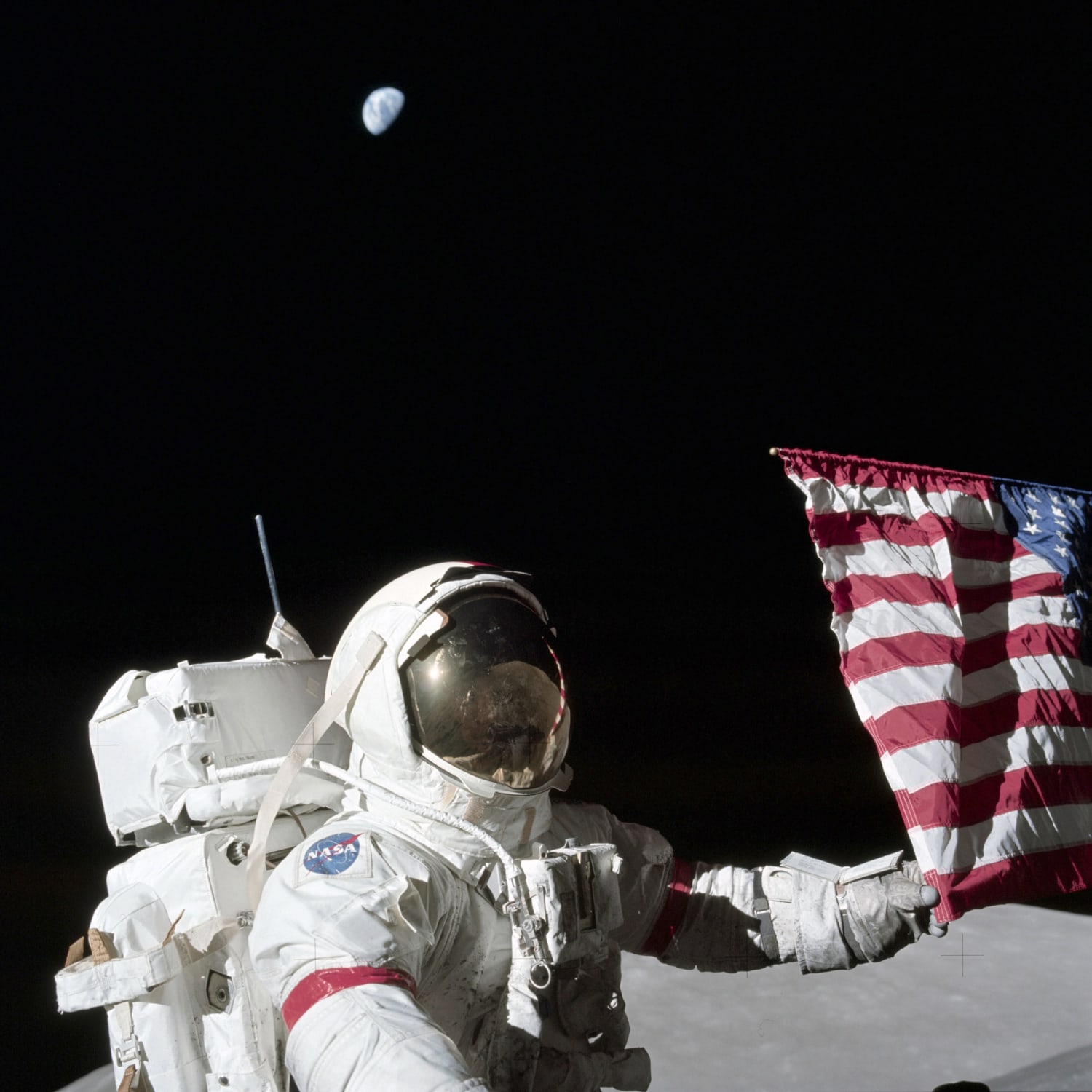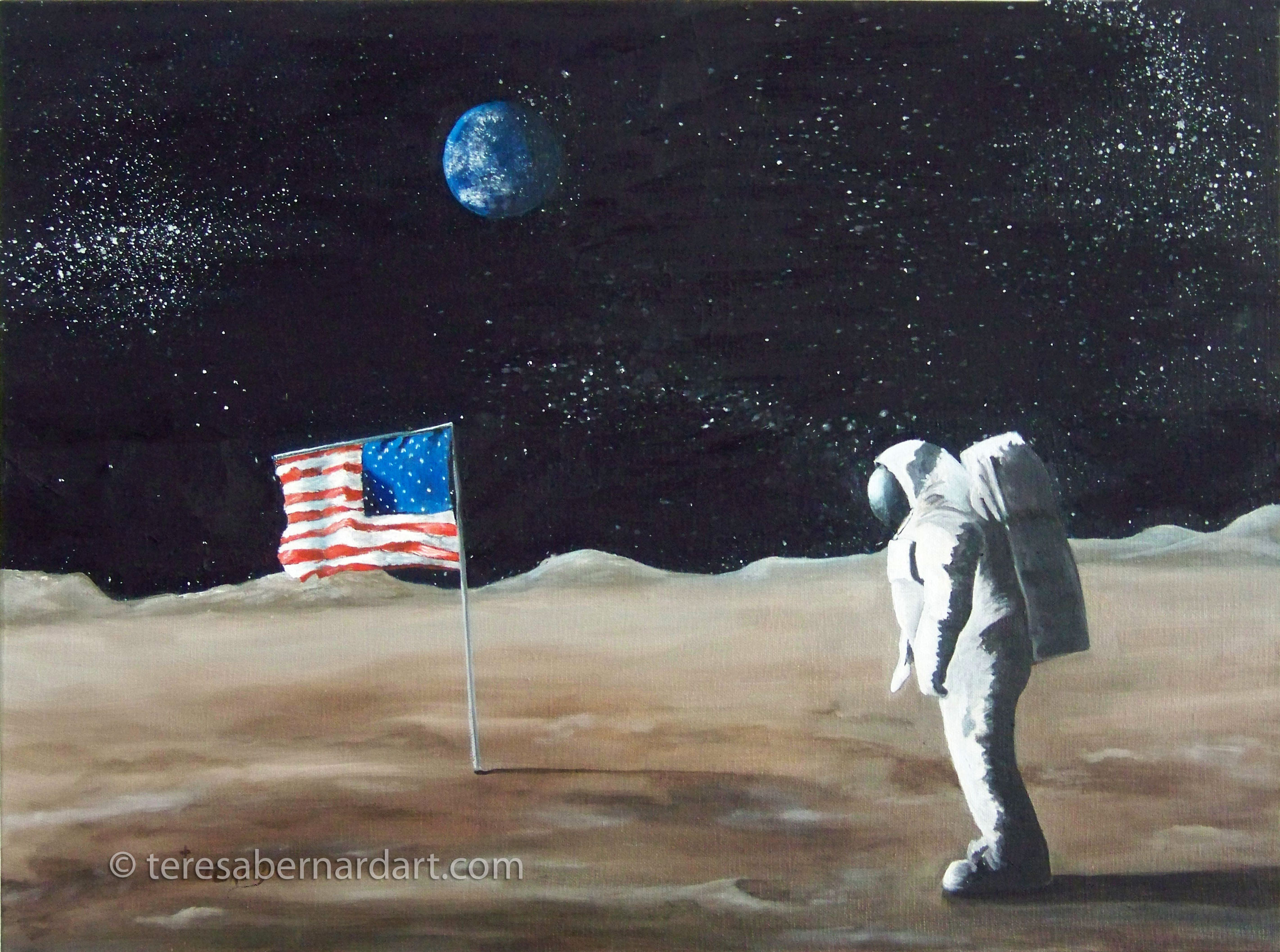

This picture brims with meaning: Someone took it. He is on the cusp of transforming the moon into a place that humans, plural, have walked upon. He’s holding on, letting go, almost there, leg out, just about to leap down. Aldrin is moving he is descending-he is alighting. It’s not posed it’s in no way a passive picture. Read: Bound for the moon: Apollo 11 preparation in photos But the picture of Buzz descending to the moon’s surface is the most compelling, in my view. That distinction probably belongs to the one of him saluting the flag, or the one of him facing the camera, legs bowed open, with Armstrong’s reflection in his helmet visor. It’s not the most famous photo from Apollo 11, nor from Buzz’s brief jaunt on the moon.

Aldrin clambered through the Eagle’s hatch and onto a ladder with its last rung hanging about three feet above the lunar surface. Once Armstrong had some moon bits safely stowed in his pocket, Aldrin finally prepared to get out and join Armstrong on the surface. He was so caught up in the first moments of moon-based photography that mission controllers in Houston had to keep reminding him to collect some moon samples, in case he and Buzz Aldrin had to evacuate suddenly. He pivoted to take a panorama, showing the terrain where he’d touched down as the spacecraft burned precious fuel. Neil Armstrong made his famous one small step, and then started unpacking the most important thing the astronauts brought with them: a 70-mm color camera.Īrmstrong’s first shot, per the instructions taped to his wrist cuff, showed the landing area, including one leg of the lunar lander Eagle.
The first man on the moon pictures series#
(NASA)Įditor’ s Note: This article is part of a series reflecting on the Apollo 11 mission, 50 years later.įor 18 minutes and maybe 19 seconds, only one human being had ever set foot on the surface of the moon. He shot a total of 3 film magazines containing over 150 frames each.Astronaut Buzz Aldrin steps off the ladder from the lunar module and onto the moon. It is the only photograph that Neil Armstrong can show of himself on the moon, as a reflection in his colleague’s visor. This is the only shot in which both astronauts appear.

The first man on the moon pictures manual#
Of course this is a manual focus and manual exposure picture and all of this without seeing the frame because the camera was not equipped with a viewfinder. In the foreground we see footprints and a part of the moon lander chassis in the bottom right corner of the frame. It is sharply focused and the colors are brilliant, despite the harsh light. The picture was taken almost directly into the sun and it is perfectly exposed. Neil Armstrong took this photograph using a Hasselblad Data Camera (read more about the Hasselblad Data Camera here)     Among others it appeared on the covers of some international publications, TIME, National Geographic, Life, etc Since then this image has been printed millions of times in thousands of contexts. Over 500 million spectators followed this historic direct transmission. Most middle-aged people still remember exactly where they were when the television pictures from the moon were first broadcast around the world. The man stands in the centre, above his head the infinite blackness of space, the moon’s horizon leans suggestively, the sloping plane continues through the visor, which reflects the instruments, the photographer, the subject’s shadow and the moon lander.

One of the many memorable images taken at the time was that of Edwin Aldrin, a solitary man on an alien planet. He was shortly followed by the pilot, Edwin “Buzz” Aldrin. Neil Armstrong, commander of the Eagle (Lunar Module), was the first man to set foot on the moon.


 0 kommentar(er)
0 kommentar(er)
